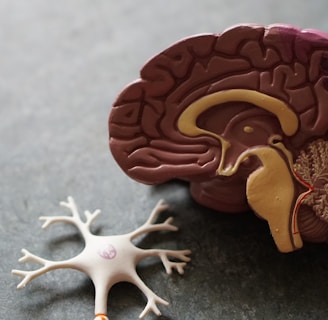Why movement health is crucial for your well-being
Understanding changes in identity in the wake of injuries
Kyle Curtis PT, DPT, CSCS
9/28/20242 min read


# Understanding the Brain’s Role in Movement: Insights from Daniel Wolpert’s TED Talk
In the world of physical therapy, we often focus on the mechanics of movement, but the profound connection between the brain and movement deserves a deeper exploration. Daniel Wolpert’s TED Talk, "The real reason for brains," offers invaluable insights into how our brains are primarily designed to facilitate movement and interact with our environment. This understanding is particularly relevant when considering the dignity and identity of patients facing injury.
## The Brain: A Movement Machine
Wolpert argues that the primary function of the brain is to control movement. From the simplest actions, like reaching for a glass of water, to more complex tasks, such as dancing or playing a sport, our brains constantly predict and coordinate our movements. This perspective shifts our understanding of brain function away from merely thinking and reasoning, highlighting its crucial role in enabling physical action.
For patients recovering from injuries, this realization can be both enlightening and empowering. When an injury disrupts movement, it doesn’t just affect physical capabilities—it can also challenge a person’s sense of self. As physical therapists, we have the unique opportunity to help patients regain not just their physical abilities but also their dignity and identity.
## Dignity in Movement
Injuries can create a disconnect between who we are and how we feel about our abilities. Patients may struggle with feelings of frustration or helplessness as they confront limitations that were once foreign to them. Wolpert’s insights remind us that movement is central to our identity; it shapes how we interact with the world and perceive ourselves.
By understanding the brain's role in movement, we can help patients reconnect with their physical selves. This means not only rehabilitating their bodies but also fostering a supportive environment that acknowledges their emotional and psychological experiences.
## Empowering Recovery Through Knowledge
Wolpert’s talk emphasizes the importance of prediction in movement. Our brains continuously analyze sensory input to anticipate the best course of action. In physical therapy, we can leverage this concept by incorporating techniques that encourage patients to engage in movements that are meaningful to them. This not only aids in physical recovery but also reinforces their sense of agency and identity.
1. Personalized Movement Goals: Collaborate with patients to set achievable movement goals that resonate with their interests and daily lives. This can motivate them to actively participate in their rehabilitation.
2. Education and Awareness: Teach patients about how their brains work in relation to movement. Understanding the science behind their recovery can foster a sense of empowerment.
3. Emotional Support: Recognize the psychological challenges that accompany physical limitations. Create an environment where patients feel safe to express their frustrations and triumphs.
## Conclusion
Daniel Wolpert’s TED Talk serves as a reminder of the profound connection between our brains and our ability to move. For patients facing the challenges of injury, understanding this connection can be transformative. As physical therapists, we have the opportunity to help patients reclaim not only their physical capabilities but also their dignity and identity. By focusing on the holistic nature of recovery—encompassing both mind and body—we can support our patients in navigating their journeys with resilience and confidence.
If you or someone you know is facing the challenges of injury, we invite you to reach out to [Your Clinic Name]. Together, we can explore the path to recovery, understanding that movement is not just a physical act, but a vital part of who we are.
